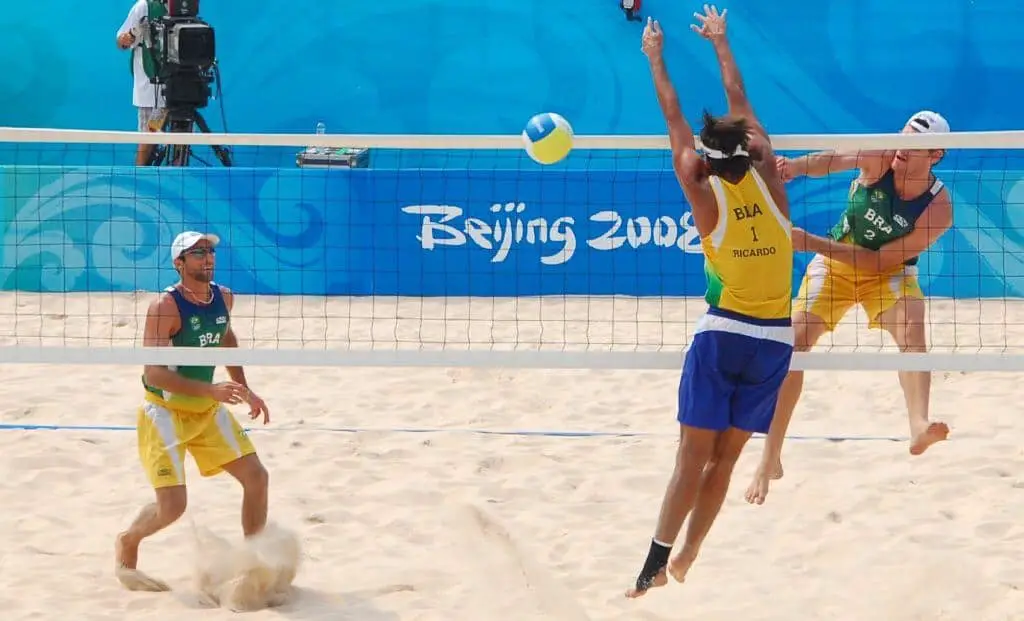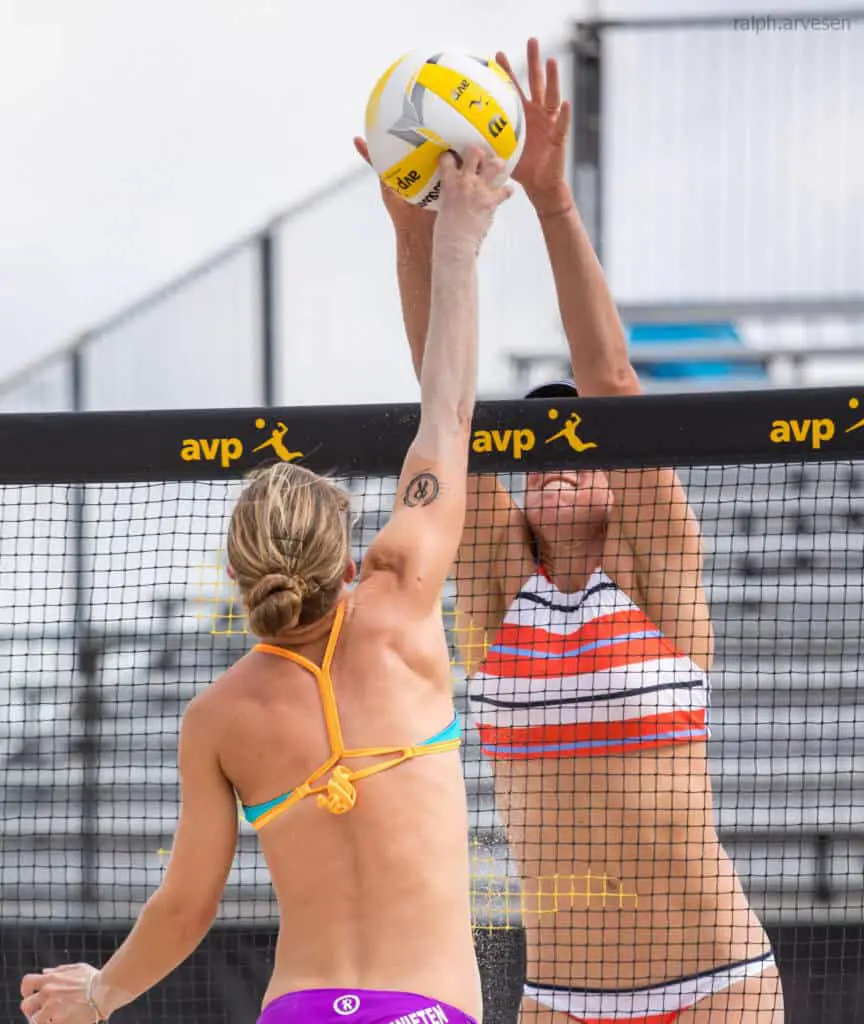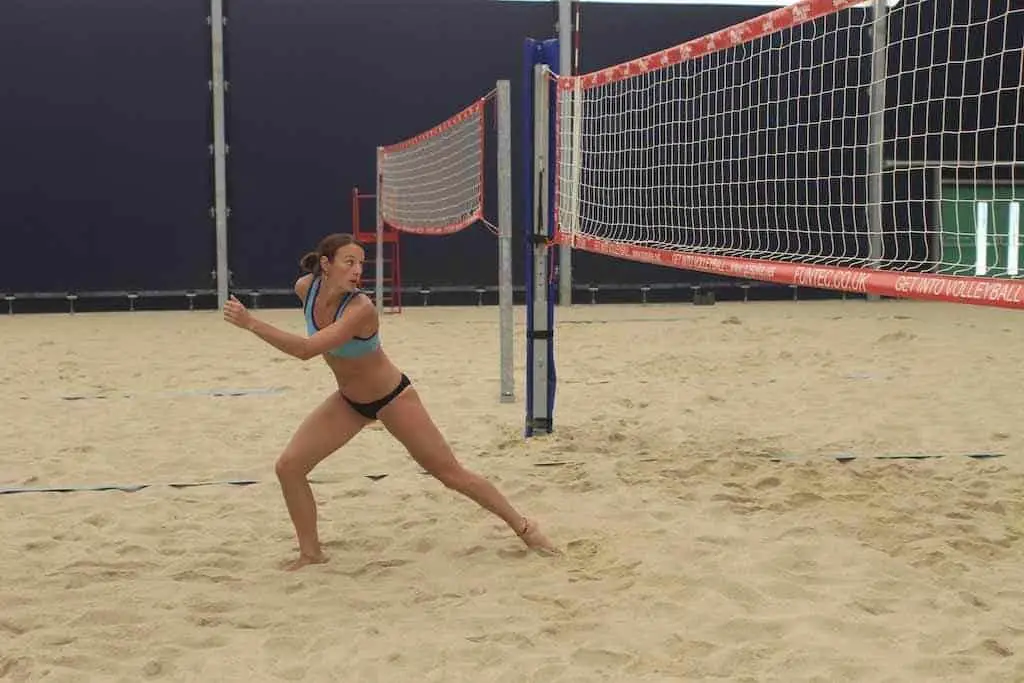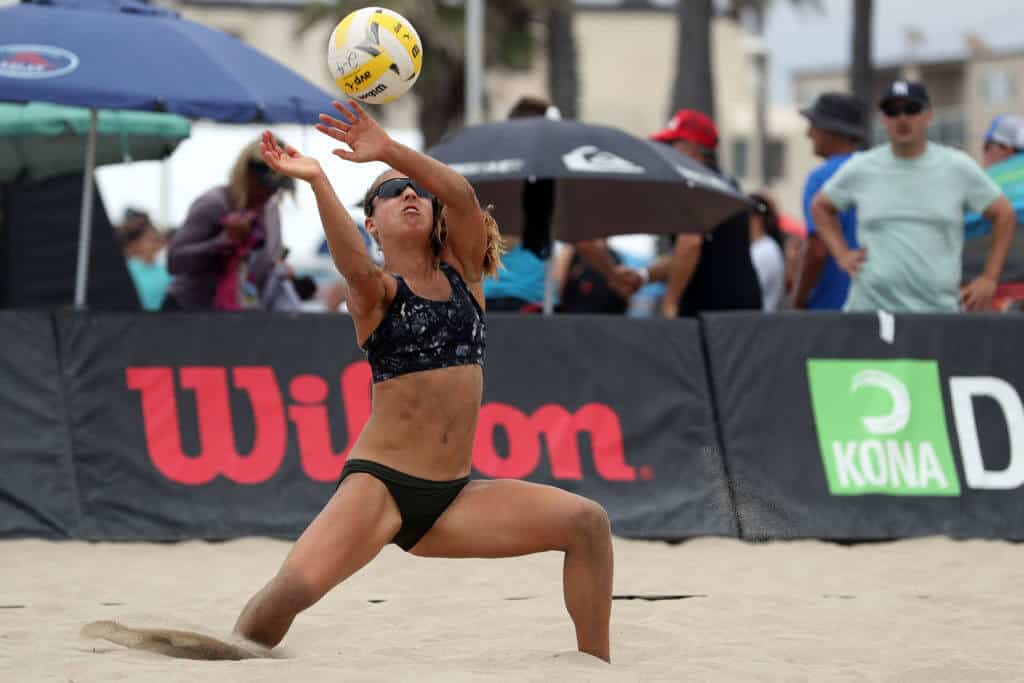Now if you have come from my article about how to get more digs in beach volleyball this article may sound familiar and that’s because, well.. There is lots of overlap in the teachings the main difference is I will be discussing this from the blockers perspective only.
How to get more blocks in Beach Volleyball
First thing you want to look at in order to get more blocks is your positioning, once you know what blocking call you are using, which you know now from my article Beach Volleyball Hand Signals.
The first thing you want to do is establish the correct position. Now to get the correct position you need to use the opponent who is hitting to get the correct line, if you are blocking line you aim is to ensure they can not swing hard down the line or swing hard into what is known as the seam, this is the area between your line block and the defender in the cross court position.
As a general rule of thumb your inside arm should line up with their outside arm.
If you are blocking ball you want to line so that the attackers arm would split you in half if they continued their arm swing on to your side of the court.
Lastly if you are blocking cross you want your outside arm to be in line with their inside shoulder. These are your blocking base positions and these should still be used if you are blocking 3’s and 4’s, the only time these will generally change is if the hitter is left handed instead of right however your principle aim as blocker will remain the same so take a step outwards or inwards accordingly.

The next thing you need to master to get more blocks in Beach volleyball is timing, you want to jump just after the attacker leaves the ground however it is important to ascertain how the attackers hit, do they have a fast and short approach or do they have a long drawn out approach, all of these factors will influence your timing as a blocker.
When you start learning the hitter tendencies you can start using the 3 block and 4 blocks more and performing more shows and takes.
Now this one is a bit difficult to justify as really your job as a blocker isn’t necessarily to block the ball but more take away an area to give your defender more time to react but its still worth discussing.
The last thing you can do is when a player hits round, past or over your block think about why they did that, did they see what you were planning, are they only looking at what your defender is doing, this is all useful information as it allows you to plan around what they are doing.
If they are only looking at what you are doing you can do more show and take blocks or alternatively just keep baiting them into hitting straight to your defender, both are viable options.
But the point is, don’t just think ‘good shot’ think why did they hit there, what information did they have and you may find you can win the mental warfare rather than the physical one.
Now this last paragraph is going to contradict the headline but we are going to talk about you next best blocking option and that is pulling and leaving no block or more importantly when and how you should pull from the net.
If you are playing a smaller team who are good with shots you may want to leave an open net. A block is very good if the opposition are big hitters as it allows you to take that option away or at least hinder it, however if they are a smaller team and very good with shots you best option may be to leave an open net and play double defence.
It is much easier to perform a line over, jumbo or cut shot when there is only one defender to beat but very difficult when there are 2 defenders.
Another option you have that again works especially well on smaller teams or players that aren’t confident spikers is to start on the net but break (Sometimes known as peel) off the net. If you can time this correctly and your opposition aren’t communicating you will often find the hitter will go for the line over or cut shot and end up hitting it right to you.
The last situation in which you may want to peel or break is if the pass and more importantly the set aren’t close to the net or in an ideal area for the attacking team.
It is worth noting though that especially when playing against strong opponents and even weaker players you shouldn’t pull from the net until you have seen the set.
There is always a chance the set will be put in a good position for the attacker or alternatively if the pass is bad the setter may overpass which allows you as a blocker to get up and punish them with a free attack.
Now we have covered when you and why you may want to leave an open net or more specifically break/ peel, let’s cover how we break from the net. It is important that when we break we don’t back pedal from the net, instead we want to physically turn and run backwards all the while ensuring we are watching the ball at all times.
It is very important that when we break we always turn towards the centre of the court to break and not towards the outside line. If we turn towards the outside line we have no way of effectively reacting to the hard hit.
When we break from the net due to the short time we have to perform this skill we will often be positioned closer to the net than a traditional defensive base position, because of this we want to have our hands out ready but more upwards towards the top of our shoulders as generally the ball will come at us from a higher angle.





